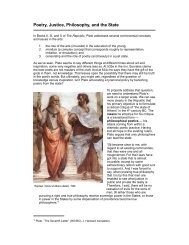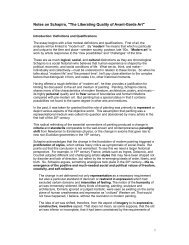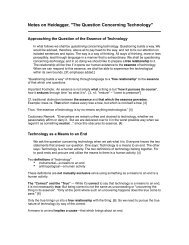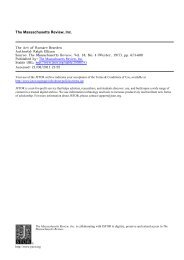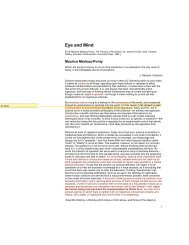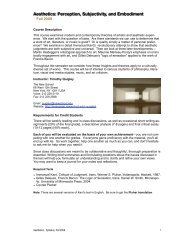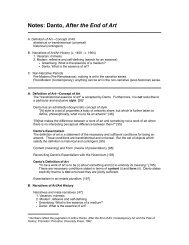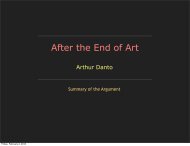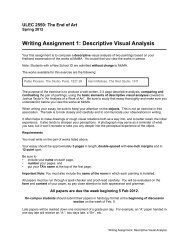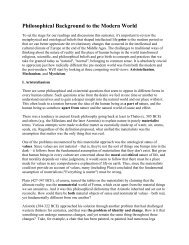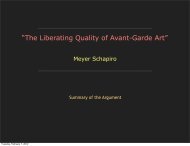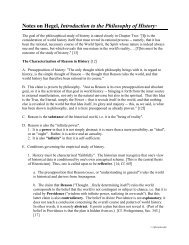AN ANALYSIS OF THE WORK OF ART - Timothy R. Quigley
AN ANALYSIS OF THE WORK OF ART - Timothy R. Quigley
AN ANALYSIS OF THE WORK OF ART - Timothy R. Quigley
You also want an ePaper? Increase the reach of your titles
YUMPU automatically turns print PDFs into web optimized ePapers that Google loves.
quick to relate like things, we sense the figures as existing together in a rhythmicalharmony even though the figures do not lose their compactness as entitiesnor seem in themselves to move. Nor are these rhythms confined to the figures.Examine the trees—for example the entwining branches of the one delicately silhouettedon the right which move in quiet undulation—the long smooth curve ofthe road and bridge, the repeated arcs of the hills, all of which have a similarity ofcharacter, and you will see how far-reaching is the harmony that pervades thisparticular pictorial world.We have made only a rudimentary beginning in analyzing in pictorial terms ourexperience of this picture, and of course we should not stop without studying therelationship of this panel tothe two side panels thatcomplement it (see Fig. I below).This painting is, in fact,the central portion of a threepanelaltar piece, a triptych.The artist has had the problemof designing three compositionswhich are selfcontainedyet which join witheach other to form a singlewhole. The complete work isreproduced in Figure I. Notehow the side panels modifyand intensify various aspectswe have mentioned of thecentral painting. It is well toremember that a composition can be affected by forms outside itself, that twopaintings viewed together, for example, may take on a different aspect than whenviewed separately.6



